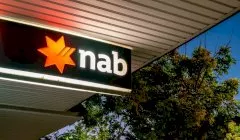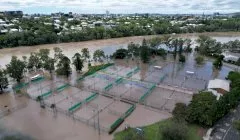Invest
Should the government give you another $950?
As the Australian economy records its lowest growth rate since the global financial crisis, investors and academics are advising that “helicopter payments” may be needed to kickstart a sputtering economy.
Should the government give you another $950?
As the Australian economy records its lowest growth rate since the global financial crisis, investors and academics are advising that “helicopter payments” may be needed to kickstart a sputtering economy.

While the Reserve Bank of Australia has hinted at quantitative easing, it might not be enough, according to Kapstream portfolio manager Daniel Siluk.
“I don’t think quantitative easing would be as effective in Australia as it has been in other economies,” Mr Siluk told nestegg’s sister publication Investor Daily.
“In the US, where mortgagees borrow 30 a year or long-term debt, QE has typically flattened curves, and a flat curve doesn’t really help a mortgagee in Australia. So, I don’t believe QE in Australia is the solution.”
Instead, the financial expert advocates for a direct cash injection similar to former prime minister Kevin Rudd’s $42 billion stimulus package that saw 8.7 million Aussies receive $950.

“A direct injection… I think that’s a more powerful tool than QE would be,” said Mr Siluk.
Critics of direct injections
While helicopter money can potentially push economies towards hyperinflation, as it did in Zimbabwe and Argentina, the concept has plenty of friends in the mainstream.
A report from Blackrock has made a case for the careful use of helicopter money, noting that it is difficult to “get the inflation genie back in the bottle” but that the challenging global outlook – both economic and political – could justify its use.
This was echoed by Warren Hogan, UTS executive-in-residence and former ANZ chief economist.
“I don’t think we’re going to get to that policy initiative unless we’re at a genuine crisis point,” Professor Hogan told Investor Daily.
“In the scope of the next couple of years, if we get a global recession that sort of interacts with the weak domestic scene and it looks like we’re going into recession and unemployment is going up, that certainly is an environment where that kind of policy tool could be put on the table.”
But Professor Hogan holds that direct injection of cash into the economy would not be enough to turn things around, and says that a suite of government policies – including infrastructural spending and tax cuts – could be the way to go.
“A direct cash handout by itself only has so much usefulness when you’re staring at a recession. It has to be a fiscal package,” he concluded.

Spending
Moneysmart study reveals Gen Z women more concerned about finances than men
A new research conducted by ASIC’s Moneysmart has unveiled the heightened levels of stress and concern regarding finances and the cost of living among Australian Gen Z women compared to their male ...Read more

Spending
The cost of politeness: Aussies out of pocket by $1,350 due to 'awkward tax'
It's the time of year when Australians dive into their pockets for festive events and gatherings, yet a recent study by PayPal suggests that many are too polite, or perhaps too embarrassed, to ask for ...Read more

Spending
Aussies can ‘NAB Now Pay Later’ with the last major bank to embrace BNPL
NAB has become the latest bank to enter the BNPL market. Read more

Spending
Aussie households spent $368 a week on transport after petrol price surge
Fuel costs have increased by 40 per cent over the past year, a new report from the Australian Automobile Association has revealed. Read more

Spending
Voters say reducing the cost of living should be the government’s top priority
Aussies have ranked high cost of living as the top issue that needs to be addressed by the next government. Read more

Spending
Bodies back Labor’s commitment to stronger BNPL regulation
All parties should commit to stronger regulations for the BNPL sector, according to Financial Counselling Australia. Read more

Spending
Household spending surges led by retail and recreation
Spending on retail, recreation and hospitality have continued to climb as COVID-19 case numbers and restrictions have eased. Read more

Spending
Banks extend financial assistance to flood-affected customers
A range of assistance is available from major banks to those impacted by flooding in NSW and Queensland. Read more

Spending
Moneysmart study reveals Gen Z women more concerned about finances than men
A new research conducted by ASIC’s Moneysmart has unveiled the heightened levels of stress and concern regarding finances and the cost of living among Australian Gen Z women compared to their male ...Read more

Spending
The cost of politeness: Aussies out of pocket by $1,350 due to 'awkward tax'
It's the time of year when Australians dive into their pockets for festive events and gatherings, yet a recent study by PayPal suggests that many are too polite, or perhaps too embarrassed, to ask for ...Read more

Spending
Aussies can ‘NAB Now Pay Later’ with the last major bank to embrace BNPL
NAB has become the latest bank to enter the BNPL market. Read more

Spending
Aussie households spent $368 a week on transport after petrol price surge
Fuel costs have increased by 40 per cent over the past year, a new report from the Australian Automobile Association has revealed. Read more

Spending
Voters say reducing the cost of living should be the government’s top priority
Aussies have ranked high cost of living as the top issue that needs to be addressed by the next government. Read more

Spending
Bodies back Labor’s commitment to stronger BNPL regulation
All parties should commit to stronger regulations for the BNPL sector, according to Financial Counselling Australia. Read more

Spending
Household spending surges led by retail and recreation
Spending on retail, recreation and hospitality have continued to climb as COVID-19 case numbers and restrictions have eased. Read more

Spending
Banks extend financial assistance to flood-affected customers
A range of assistance is available from major banks to those impacted by flooding in NSW and Queensland. Read more









